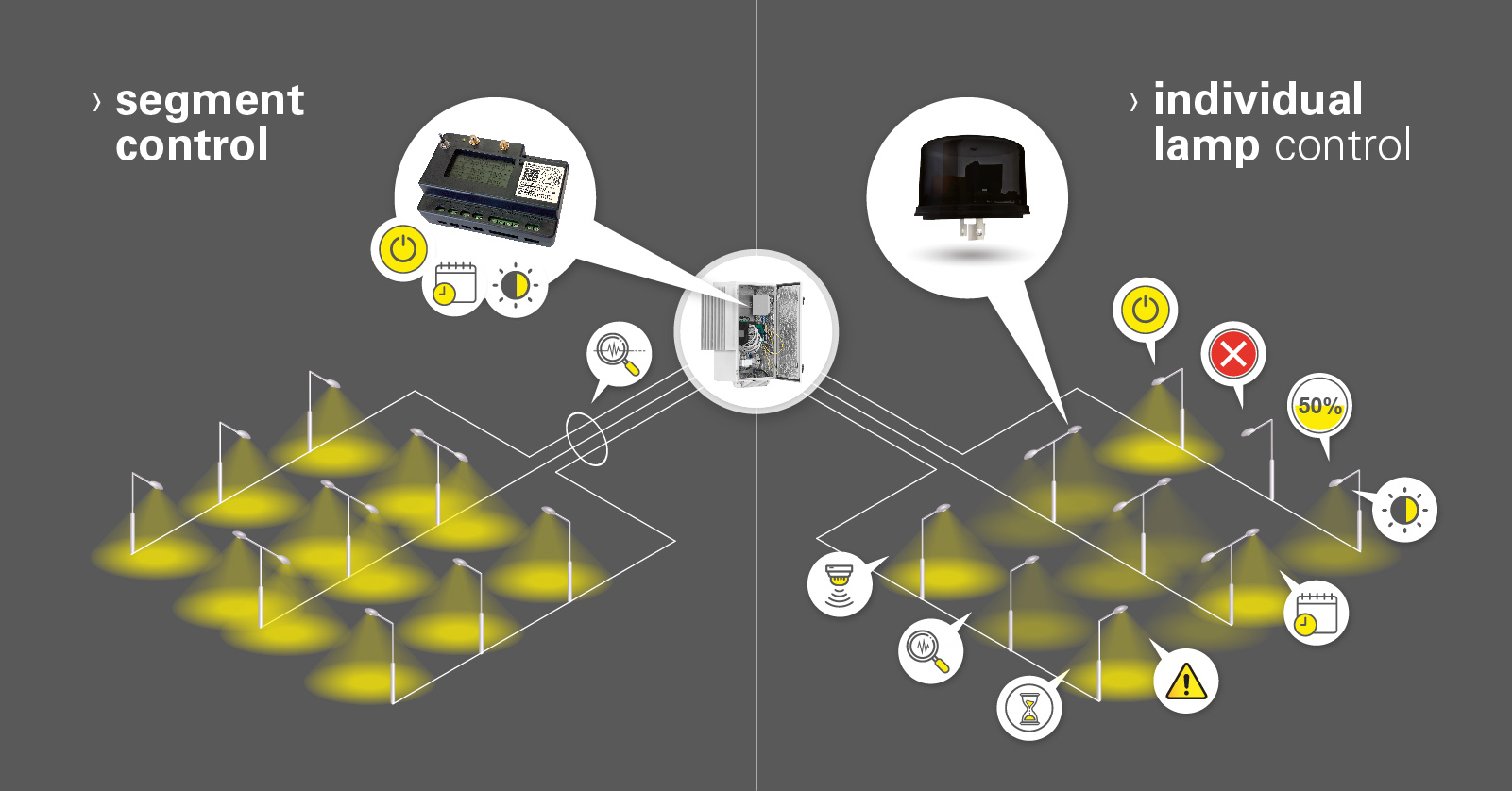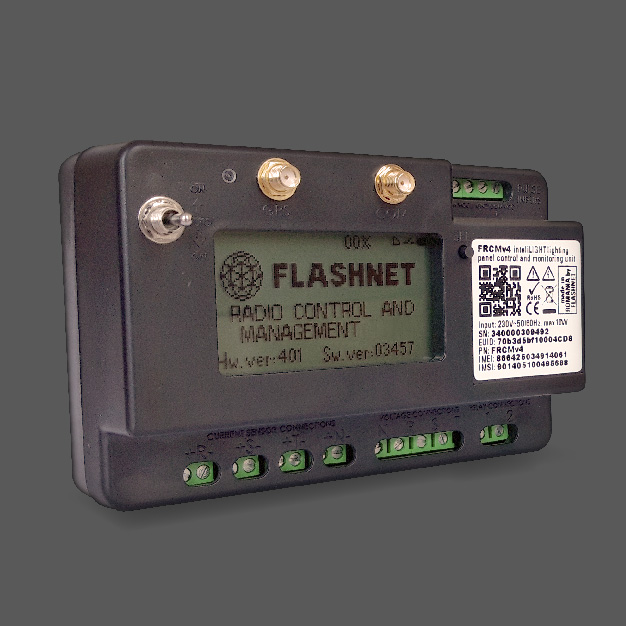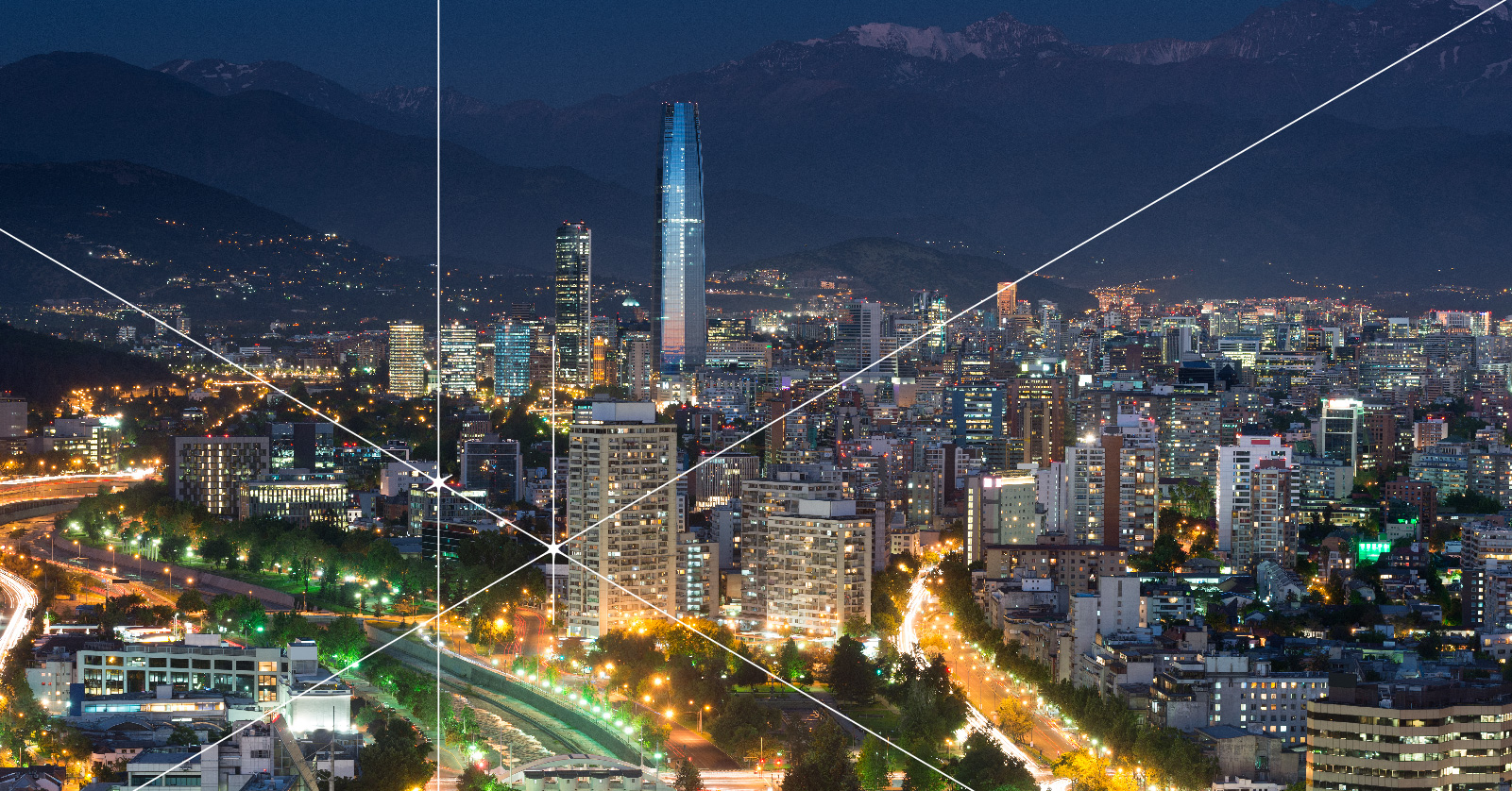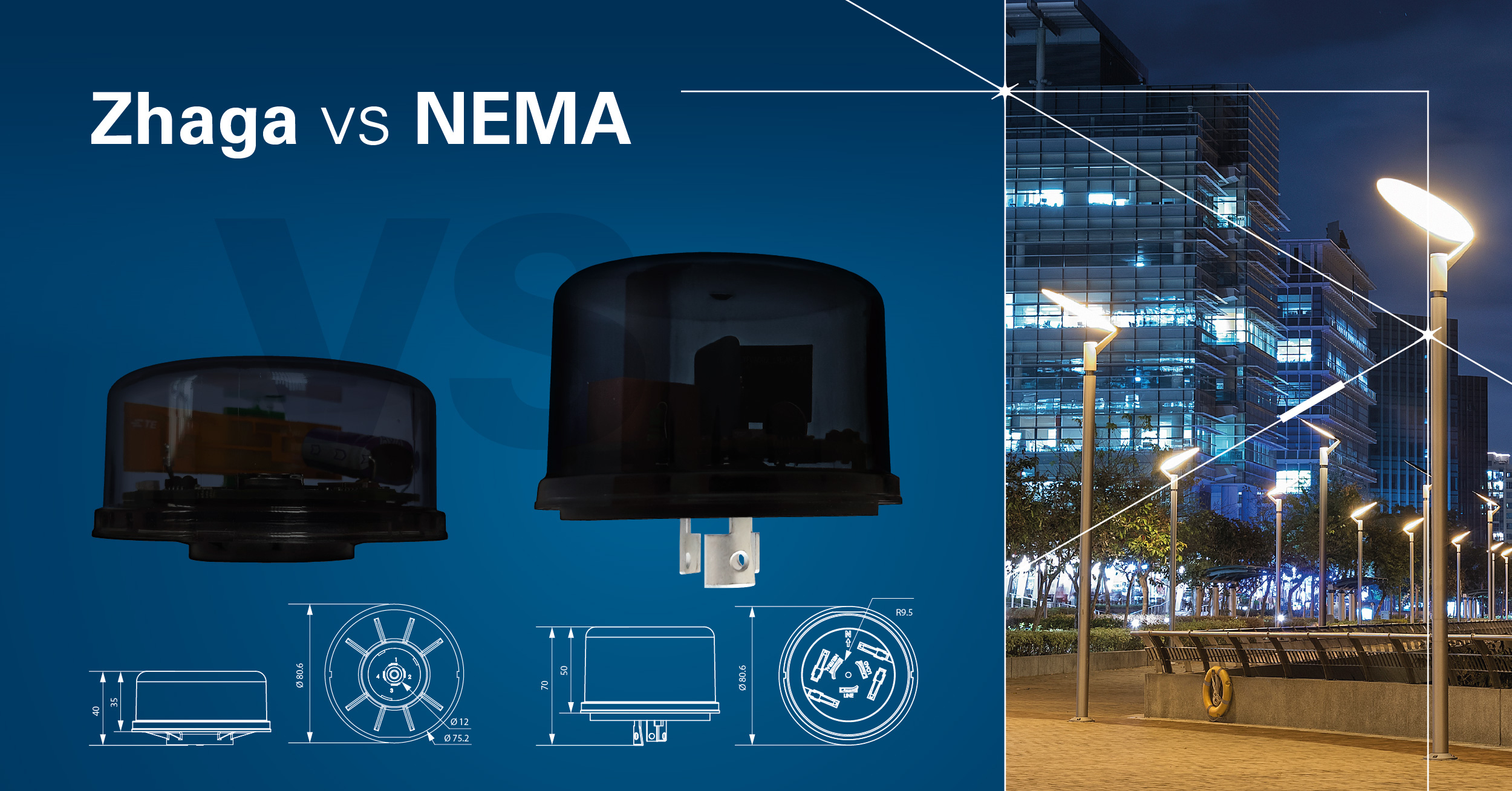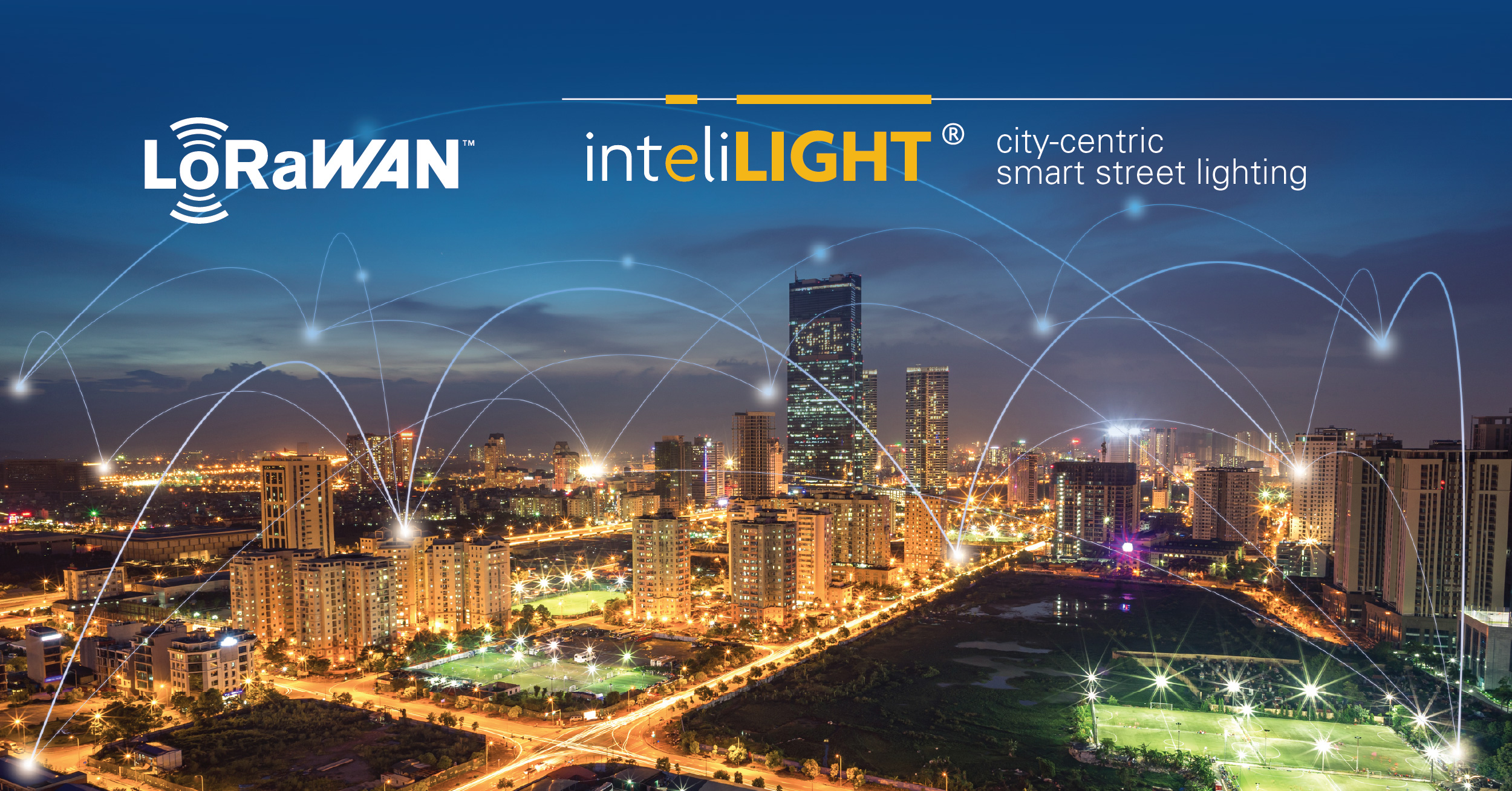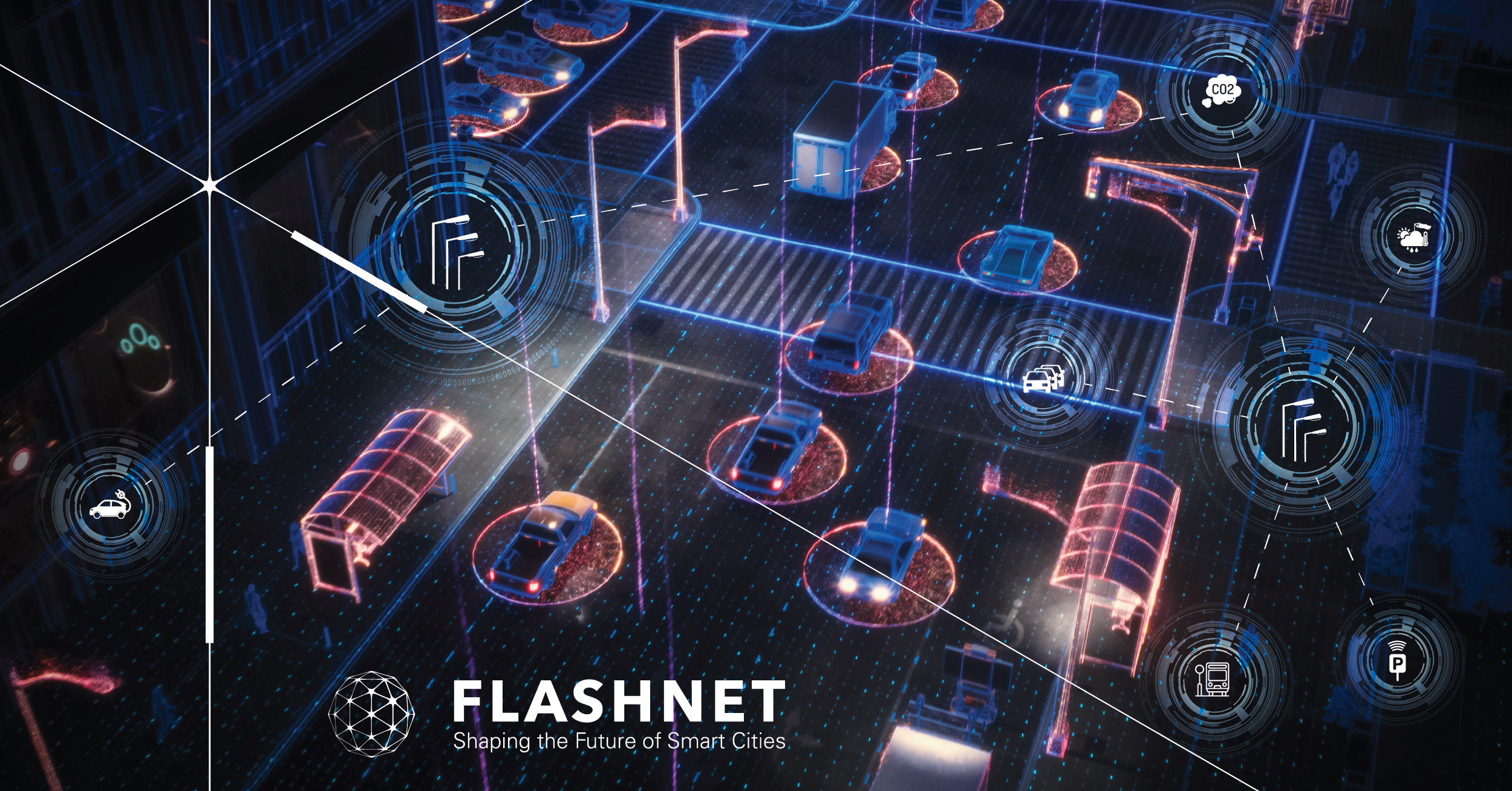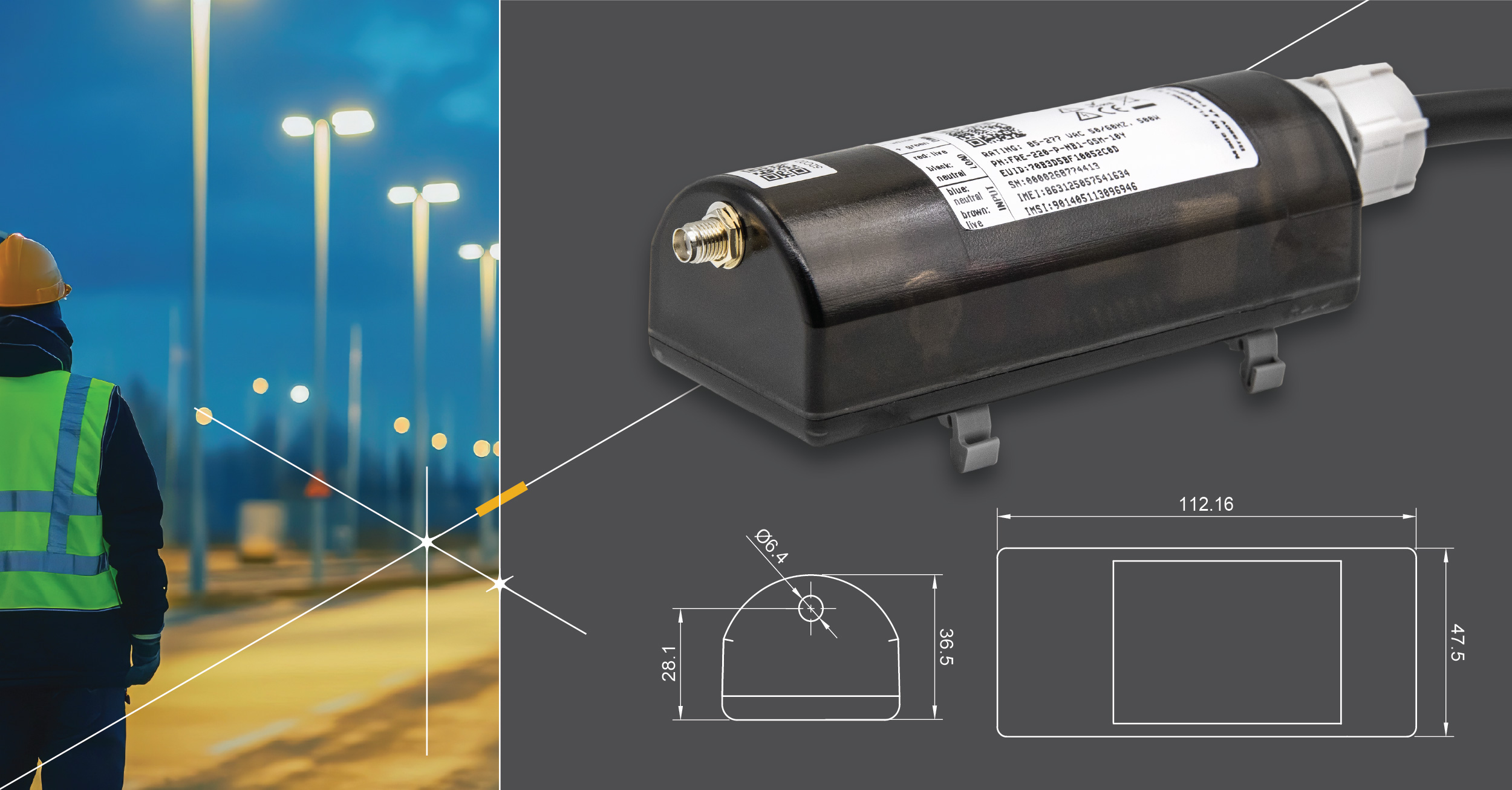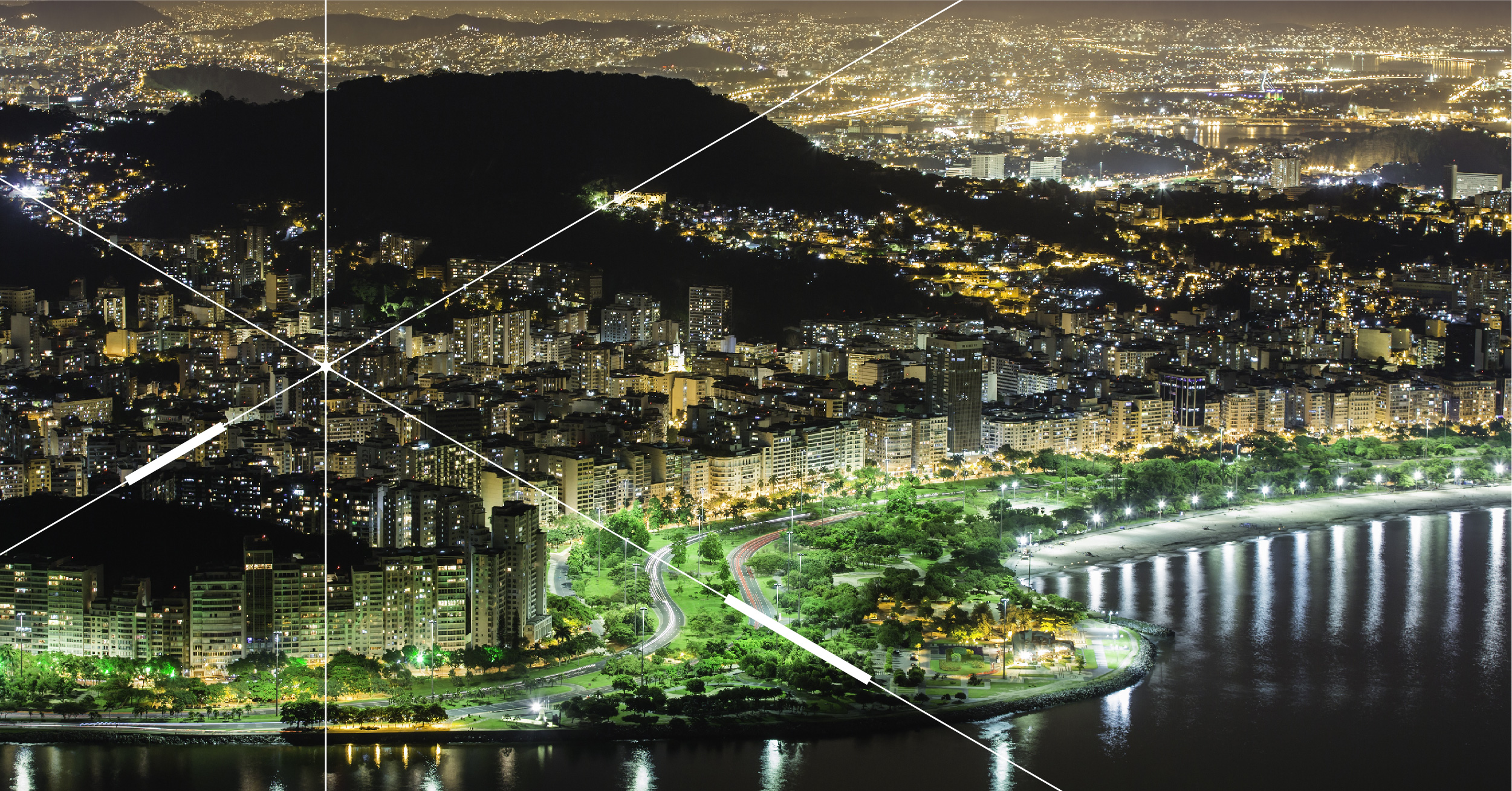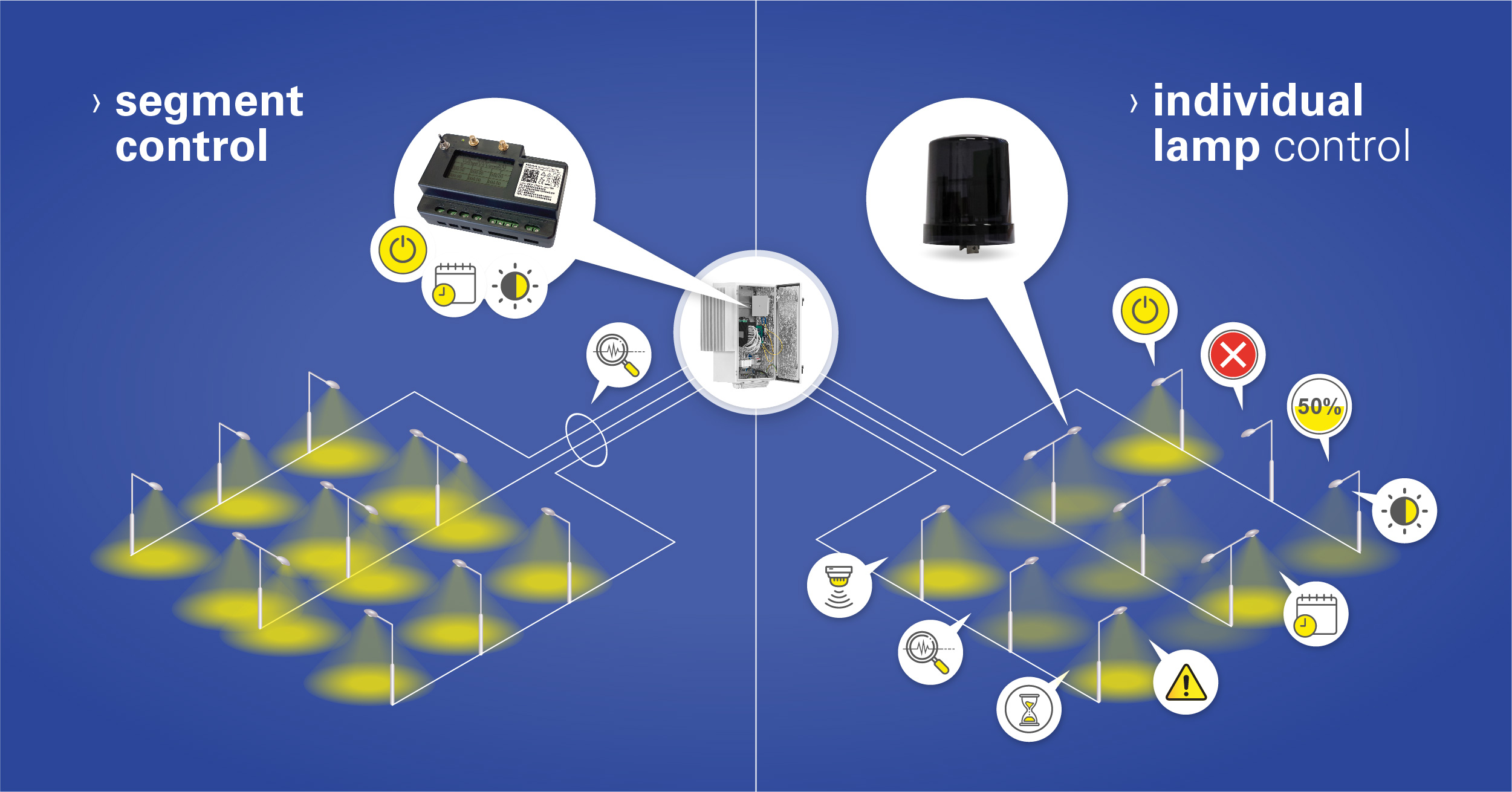Cabinet control for smart street lighting – A fast solution preferred by smart cities aiming for swift implementation
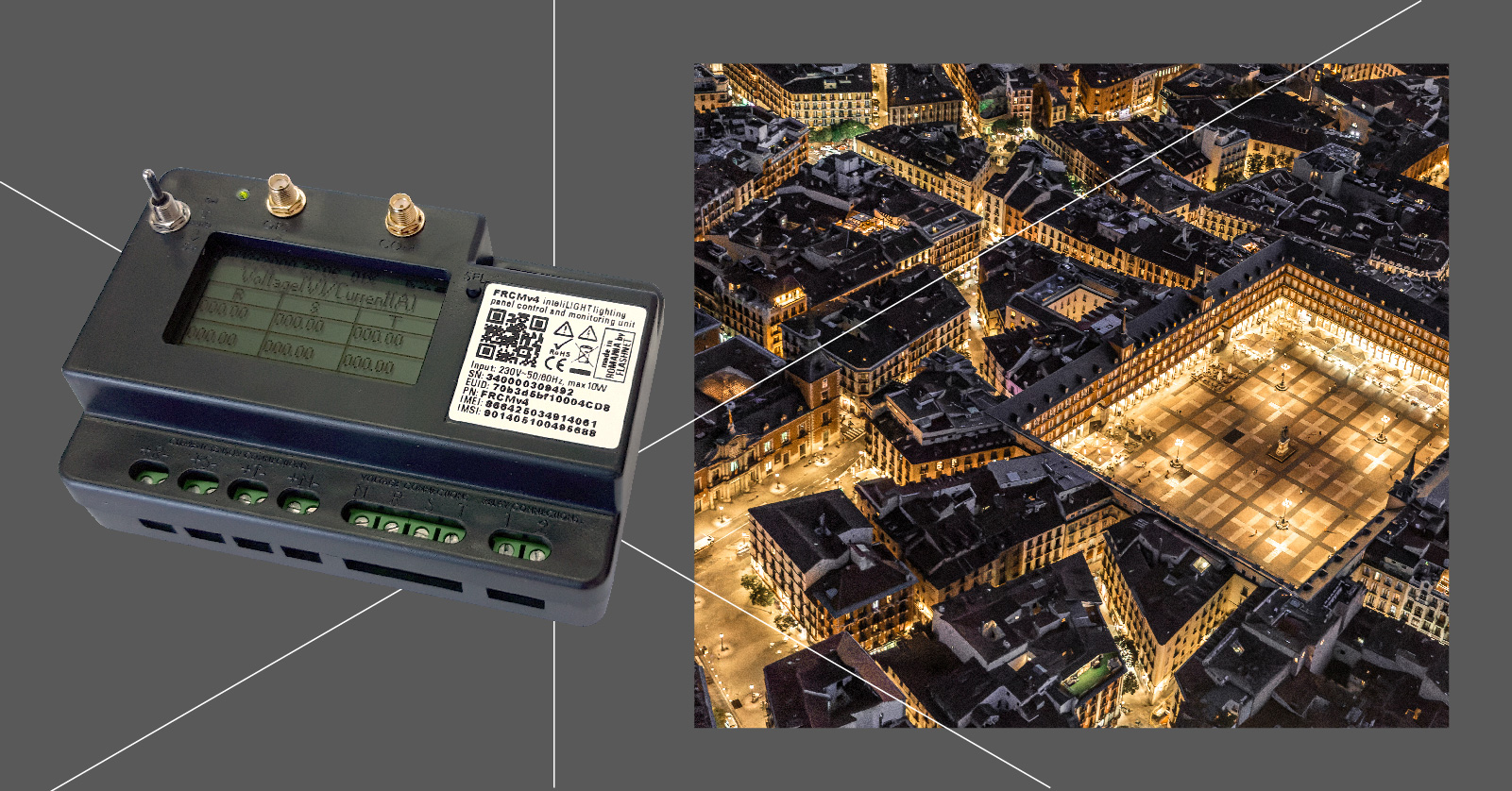
The rise of smart cities brings a new era of innovation and efficiency. As municipalities worldwide seek solutions to address the complexities of modern urban living, the integration of smart technologies has become imperative. At the forefront of this revolution is the concept of smart street lighting control, a cornerstone of urban infrastructure optimization.
Before we delve into these details, let’s first examine the broader landscape of smart street lighting control and the comparative advantages of cabinet control versus individual streetlamp management.
A short introduction into smart street lighting
Smart street lighting essentially has three core components: the lamp controller (which can also function as a segment controller), the communication infrastructure, and the control software, often referred to as the Central Management System (CMS) or smart city management software. Each component plays a crucial role in ensuring the efficiency and effectiveness of the smart street lighting system.
The purpose of such an advanced system? Bringing comprehensive control over the street lighting infrastructure. It enables municipalities to anticipate faults and address malfunctions in record time, ensuring minimal downtime and maintaining service quality. Additionally, managing individual streetlamps brings significant benefits in terms of improved lighting quality, enhanced citizen safety, and substantial power savings.
Individual and Segment smart lighting control
With individual control, each lamp has its own smart controller, allowing for precise, lamp-level ON/OFF and dimming control. Besides these functions, luminaire controllers carry out measurements and analysis of different electrical parameters at streetlight level: under/overpower monitoring, voltage monitoring, phase failure and consumption mismatches.
In contrast, cabinet control involves placing controllers in feeder pillars, enabling control over clusters of lamps and offering faster deployment and lower costs.
Both individual and cabinet controllers allow ON/OFF control, electrical grid feedback, and even completely autonomous lighting operation. Individual control comes with a few extra perks though: individual lamp control, measurements and dimming – that the cabinet controllers cannot perform.
inteliLIGHT FRCM cabinet controllers
The term “FRCM” (Flashnet Radio Frequency Control and Monitoring unit) is exclusively used by Flashnet to define the inteliLIGHT segment controllers. The FRCM can cover up to 200 lamps, managing clusters of lights connected to the same feeder pillar as single entities.
It’s particularly valuable for larger, uniform areas like highways, residential streets, or public parks, where consistent lighting is essential. Additionally, this technology is widely utilized in many smart cities to rapidly deploy smart street lighting solutions or to enhance individual lighting control systems.
Imagine upgrading to a smart street lighting system without the need for extensive installation networks or exorbitant budgets. The FRCM segment control provides a multifaceted approach to managing city lighting, offering significant cost and installation speed advantages. It allows for rapid deployment and efficient operation, making it an ideal solution for municipalities looking to implement smart lighting solutions without incurring overwhelming expenses.
With FRCMs, you get control and grid information, but limited to lamp segments. It’s fantastic when the lighting network is well structured and you do not need dimming or individual lamp setup – getting the best of both worlds: robust control and detailed grid information for segments of lamps, all at an affordable cost.
Furthermore, the inteliLIGHT FRCM offers flexible communication options: from LoRaWAN to cellular networks, they are available for a wide array of communication technologies that suit any project’s needs.
InteliLIGHT® FRCM controllers maximize Cabinet Control’s potential for urban lighting networks. They facilitate infrastructure control at low implementation costs by enabling segment-level lighting for a cluster of lamps: segment on/off, autonomous operation and detailed street lighting grids electrical parameters.
Why are cabinet controllers so popular?
Many smart cities use cabinet controllers in their smart street lighting setups, either replacing or complementing individual control:
- Compatibility and Robust Connectivity: InteliLIGHT® FRCM controllers are compatible with various LPWA communication standards, including LoRaWAN™, NB-IoT and LTE-M. This ensures robust connectivity within urban settings that abound with physical and radio-frequency obstacles.
- Flexible Operation and Monitoring: They allow street lighting autonomous operation based on predefined schedules or external light level sensors. The cabinet controllers also enable remote real-time segment ON/OFF control and facilitate remote monitoring of grid parameters such as voltage, current, power factor, and energy consumption.
- Autonomous Operation and Comprehensive Overview: Installed inside feeder pillars, inteliLIGHT FRCM controllers can be deployed within weeks to provide autonomous operation for street lighting installations.
- Configuration Options: Customizable settings for current transformer ratio, voltage/power thresholds, and daytime/nighttime consumption thresholds are available. They also include an LCD display for real-time visualization of electrical parameters and device status, along with a GPS for accurate location and time tracking.
- Maintenance and Longevity: Designed with a manual override switch for local control, InteliLIGHT FRCM controllers provide an estimated lifetime of 10+ years, offering a long-term solution for managing smart urban lighting networks.
- Advanced Security Features: They come equipped with VPN encryption and key rotation to ensure the safety of transmitted sensitive data.
Who can benefit the most from lighting cabinet controllers?
Cabinet controllers are designed to benefit anyone involved in the implementation and outcome of smart lighting projects, being especially efficient in use cases with a structured lighting grid.
A city that already has feeder pillars functionally organized (one feeder pillar supplying a park, another for street segments – for example) – can use segment controllers to efficiently manage the hours of street lighting operation in coordination with their citizens preferences and municipal strategies, prolonging lamp lifetime and significantly reducing energy consumption.
- Smaller towns with limited budgets looking to improve their infrastructure while managing costs also tend to prefer cabinet controllers to ream the smart benefits at the lowest possible cost.
- City officials gain access to advanced capabilities, enabling data-driven decisions, operational efficiency improvements, ultimately reducing maintenance costs and enhancing service quality.
- Additionally, FRCMs are suitable for municipalities that want to set up the stage for broader smart city initiatives, as they provide an essential foundation in smart technology integration.
Projects using inteliLIGHT FRCMs
As we have discussed, inteliLIGHT® FRCM cabinet controllers offer a wide array of benefits for smart city initiatives. But don’t just take our word for it – let’s explore some real-life examples of how these cabinets are making a positive impact in cities around the world.
The Riyadh smart street lighting Project
In Saudi Arabia’s capital, Riyadh, the city’s urban landscape underwent a remarkable transformation, including the installation of over 1200 inteliLIGHT® FRCM cabinet controllers aiming to enhance maintenance efficiency, improve service quality and bolster public safety.
The smart transformation of Santiago de Chile
Santiago de Chile lights up the way for smart city investments in South America and inteliLIGHT is the solution of choice for street lighting control. Through NEMA controllers and FRCM lighting cabinets, Santiago achieved significant energy and cost savings.
In downtown Santiago, where detailed control is essential, individual lamp controllers were used to provide precise management and customization. In contrast, the suburbs employed segment control using FRCM cabinet controllers to introduce smart features at the lowest possible cost and with rapid implementation.
This hybrid approach ensures that the system uses several communication technologies simultaneously (LoRaWAN and cellular), offering redundancy and enhancing reliability. The combination of individual and segment control allows Santiago to maximize the benefits of smart street lighting across different urban areas efficiently and economically
The inteliLIGHT® FRCM cabinet controllers shine brightly in the field of smart urban lighting solutions. They provide the backbone for responsive, efficient, and sustainable city lighting, imperative to both immediate urban needs and long-term developmental blueprints.
Clearly, the future of urban development is being written in the language of smart technology. With the right tools, such as the FRCM cabinet controllers, municipalities and city planners will be able to rewrite the narrative of smart, cost efficient and fast infrastructure deployment.


